|
WELL, IT'S FRIDAY, ISN'T IT?
Yes, it is time for my atonement, the day of reckoning where I tell you of my sins and successes over the past week. I managed to accomplish quite a bit of writing, but when I look back on the week, it's been a blur. Oh yeah, we had Friday off last week but my daughter was glued to my side and I scheduled flu shots for everyone but me (it's okay, I got the jab yesterday). Saturday was brunching and house-related BS as always, and Sunday was literally the entire day consumed with watching Black Panther: Wakanda Forever and grabbing food in Portland afterward. Then, the work week happened and it's been the process of closing out one textbook edit and gearing up for a few more (possibly DEs this time around). Also shopping for hosting multiple Thanksgiving dinners. Prepping Christmas cards. The whole holiday rush is upon us, at it always is this time of year. I haven't had much down time lately. HOW'S THE WRITING THEN? Behind? But not by too much at this point. Writing this book has been an incredible rollercoaster of flying up and down in word count depending on the day or the hour of the day. SO MUCH EMOTIONAL TURMOIL. On the 15th I was riding high because I was 2k words ahead, and now on the 18th I'm behind again. Ideally, I would be logging 2k words a day, but hitting that mark is just not always achievable. Especially when there are SO MANY DISTRACTIONS right now like watching Twitter implode and successfully skirting COVID, RSV, and the flu. LOL I wormed my way out of one writing barrier only to smash into another wall this week and this one feels a lot more stuck than I was previously. Sort of. I set up the grounds for a scene that I could write out of order (gasp). I know the rest of the plot, so I could just Hulk smash my way into later bits that I know for certain need to happen. Not sure what's driving the lack of motivation or enthusiasm. I WAS SO READY TO WRITE THIS BOOK and now I'm just like "Ok, gotta put in my hours" with no drive or passion behind it. I hate that for me. THE OUTLOOK IS GOOD? Of course it is. This is me we're talking about. I'm building a revision plan in my head as I type. Part of me STRONGLY DESIRES going back to add in the bits right now, but the other part of me knows that getting the whole book on page and completing it will actually be a better use of my time. Why can't I revise and edit while writing the first draft like I really want to? Because, Dear Reader, it's a waste of time when likely that content will be cut and reformed anyway. I know this to be true. And still, and yet, the writerly heart wants what it wants. No amount of logic can deter that. Part of my reticence, I recently discovered, is my lack of connection to the main character. He's a Grade A-hole but likely not sympathetic ENOUGH. So, I need to go back to earlier chapters and seed in some more likable elements to ground him and build reader (and let's be honest, my own) sympathy. The good part is, I know what those things are NOW so I can just move forward like they're already in place. I know. I don't know. Just accept it. It's the process. A HACK? A POTENTIAL HACK? One way that has helped me---when I am finally, blessedly in the writer flow---is using the display word count feature in Google Docs, so I get an up-to-date measurement as I write. Before I would get in the writing zone, hit the pause button to see how many words I'd logged, and have to do math only to discover I'd written like 250 words when I was thinking it was 1,000. Imagine the disappointment and heartache. Tracking word count in real time has given me a fun sense of liberation. Like catching the moment when your odometer hits 100k miles or something. It's fun to mark those milestones and watch the word count pile up without that sense of foreboding or dread. Best of all, it doesn't require me to stop what I'm doing and commit to another digital task. I simply look down, feel the surge of pride, and keep moving. It's Day 18 and I'm 31k words into this WIP. Happily, I'm up 12k words from last week, and I've progressed three more chapters, so that's something over nothing. Just wish I could stop wrestling with stupid doubt. My bully brain is really doing a number on me lately, and that doesn't help the writing process. Like, AT ALL. Send some positive, kind vibes my way??
0 Comments
WHAT IS HAPPENING NOW? I made it through another week, that's what. Didn't accomplish much writing over last weekend because Saturday was cleaning and Sunday was an all-day marathon of family photos, Columbia Sportswear employee store, picking up an electric piano for Audrey, and swinging by Shake Shack for dinner. BUT THE WRITING WAS OK? Eh, sort of? After starting out strong with SEVERAL THOUSAND WORDS in the bank, I've hit a lull in the story which required A LOT OF WALKING WITH MUSIC to wrestle my way out of. Part of the thing exciting me last week was "no real outline for what happens during the haunting" so I could use my IMAGINATION but then this week I was like "what imagination?" and putting words on the page was like playing mental Jenga. Things are on the page now but they're not necessarily in the right order. I also need my characters to be ENEMIES at this point but I'm like BUT WHAT IF THEY JUST LOVE EACH OTHER ALREADY and that is my fatal flaw. I can't just have characters be mean or mad for too long. Anywho, my word surplus was slowly drained over the last seven days and now I find myself in that tricky spot so many authors arrive at during this exercise...BEHIND. I told myself I didn't care about meeting word goals but it turns out I secretly do and I'm starting to get that panicky feeling because I SHOULD BE MAKING MORE PROGRESS. How about some other fun content instead? CHARACTER INSPO IMAGES I DID spend a lot of time pre-Nanowrimo building out very full character profiles, complete with inspirational character images. Introducing the cast of characters in Ghost Story (Nowhere Man): from left to right Desmond Jones, Molly Starr Park, Maxwell Edison, Georgia "Georgie" Lee, and Sadie Krueller. THAT'S NICE, BUT WHERE YOU AT?
Six chapters in and 11 days in. I'm slowly working my way out of the initial haunting weeds and learning some cool stuff about ghost hunting and...uhm...particle physics so that's great news? Ha ha. No but really, I am seeing the light at the end of this particular writing tunnel. I was STUCK and STRUGGLING during parts of this week. It's amazing what a little exercise and playlist can do for the brain. There was a great bit I had the pleasure of writing last night with sleuthing on a Tinder-esque dating app and I probably just need to ignore the word count and "have more fun." That's easier said than done because how am I supposed to measure my success and performance and abilities if not against an arbitrary goal? By comparing myself to others? ;) It's Day 11 and I'm 19k words into this beautiful, glorious MESSY-MESS. Yup, it's officially in hot mess territory WHICH IS FINE because it's a rough draft. I'm allowed to cut/paste content into "ghost chapters" in this part of the process. Look, gimme another week and I'll be back on track. *cracks knuckles, rolls head on neck, jumps in place and shakes out my shoulders* Let's do this. THIS WEEK WAS A WEEK Between my favorite holiday (Halloween) and the recovery from the holiday (both myself and my child), and then editing a big old sweaty textbook in my day job, things have been slightly busy BUT I HAVE BEEN DOING GOOD THINGS. I promised myself recently I'd try to eat healthier (Halloween candy doesn't count) and exercise so I'm back to taking daily walks EVEN IF my workload is mind boggling and I NEED TO WRITE and guess what? I'm disgusted to report that I'm still getting stuff done so my theory that cutting out exercise saves me from anything is patently false. A TRICK I sort of cheated but I already confessed to that. I started this month with a bonus 7k words but arriving at my current destination was all me this week. It helps that I wrapped up any other side projects I had going on RIGHT BEFORE Nano started so I'm not reading anything else at the moment, even though my Boo loaned me Gideon the Ninth on October 30th and I am SO TEMPTED. I handed my current draft of Rosita Ruins the Heist off to another beta reader, so I'm not EVEN thinking about any other books. The Nowhere Man/Ghost Story has my full attention. And as this is a first draft/rough draft, I'm allowing myself (however painful) to not worry TOO MUCH about the actual writing and instead focus on the voice (since it's first-person POV) and getting the meat of the story down on paper. There will be plenty of time later to pretty up sentences and phrasing and excise bad exposition. This is GO TIME, BABY, YEAH and decorating the prose is like adding the pretty flowers on top of the cake and you have to make the cake part first which is usually so unattractive that people wouldn't eat it without frosting. Damn. Now I'm kind of craving cake... AESTHETIC Since I enjoyed posting up the synopsis last week as a teaser, I thought I'd share more pre-work. I put together multiple Pinterest boards within Pinterest boards and settled on a sort of "mood/aesthetic" which so far doesn't match the writing style or tone so much as it flows with the story and the internal world of the characters. More on that later. Maybe when you read the book? ;) THAT'S NICE, BUT WHERE YOU AT?
Four chapters in and only four days in and I have a really good sense of where things are going. I just have to STAY THE COURSE which is so incredibly challenging for a former pantser turned plantser turned somewhat plotter. However, Molly Starr Park made some excellent decisions in the previous chapter and both Desmond and I are curious about what happens next. The only thing is, I know exactly what the next sequence will be! Ha ha! I did not fully map out what occurs during the haunting, so this is fun mess-around break-stuff territory inside of a pretty well plotted outline so maybe that's the key? Build out the story and characters, but build in spaces for imagination and play to take over? It's Day 4 and I'm 11k words in to this beautiful, glorious NOT-mess. Let's see what kind of shenanigans I can get up to this weekend. *fingers crossed* It's that time of year again. Nanowrimo time! The time when I take stock of my writing goals for the year and determine how I best want to use the next 30 days of time to piece together at least 50k words of a draft. More on that later!
ESPOOKY SEASON CONTINUES Not sure what it is this year... maybe the extended Pacific NW summer or the "post-pandemic" lull of life after making some major moves (literally, figuratively). 2022 had ALL THE THINGS --- new job, new house, new city, turning 40, sending my kid to FOR REALS school. Just, big big stuff! Some of it, very, very scary indeed. I've been desperately watching scary movies all month long to feel the fear and nothing is hitting with the creepy vibes. So, perhaps it's time I take a turn at the helm of horror. Spooky season won't end for me on Halloween night. It will end when I'm done writing the next book: Nowhere Man: A Ghost Story! NOWHERE MAN Okay, it's a tentative title, so don't knock it? Well, all my titles are tentative until they're not. It's having a bit of an identity crisis because I refer to it mostly as Ghost Story, but Nowhere Man is really settling in with me, so we'll see. Anywho, I've done all the pre-prep planning that I could in the form of a Pinterest board and multiple playlists. Made an outline with some oomph behind it via Abbie Emmons. The whole premise has already changed from "a ghost that saves a girl's life and then falls in love with her and tries to kill her so they can be together forever" to... well, not that. I even made character sheets for SIDE CHARACTERS because I am THAT invested. It's been a fun bit of organizing and the thing is that I got SO BORED because I finished all my prep way before November 1, that I started writing it already. Yep, I did! We're two chapters in baby, yeah! And I love it? Desmond Jones is my POV character at the moment and he's such a superficial asshole, it's really fun to write him just snarking and silently hating on everyone and everything. I'll be switching to Molly Starr Park's POV in upcoming chapters, so that'll be a fun change-up. I like them. I'm gonna put them through the ringer, but in the end, I think it'll all be OK. SYNOPSIS When Molly Starr Park flees to Portland to restart her life in a brand new city in a brand new job, she arrives to more than she bargained for. The Prothero-provided condo she moves into is haunted by the ghost of Desmond Jones, a former Prothero employee, and he doesn't like her. In fact, he wants her OUT. But both of their lives (well, after-life) are unraveling and despite their corporeal differences, they seem to be the only ones who can help one another. GOALS, GOALS, GOALS My goal is to write everyday. Surprise! It's not "produce 50k words in one month" because that doesn't feel super good to me at this point in my life. I have fumbled the last few times I NANO'd simply because I tried to meet an audacious word goal in a compressed and busy holiday season/time of the year which meant pumping out garbage (hey now, go easy, friend) to fill the quota and ending up with an over-bloated manuscript (Rosita) that I now have to trim down to a manageable size. I mean, that's always my problem anyway (writing too much) so why not start with a rough draft where I'm writing JUST THE RIGHT AMOUNT instead? How about that? I'd rather just spend the month of November dedicating time every single day to progressing the manuscript forward, in whatever form that will take. But the idea is I have to write EVERY SINGLE DAY. Even if it's just a sentence or a paragraph or maybe one or two words. I have to open that damn document and make it count. *fingers crossed* Here goes anything at all! WHAT HAPPENED?
I took the summer off. Sorry? Did you miss me? I'll admit, I missed this platform, but something in me needed the space, Dear Readers, and I hope that's okay. Actually, I took the whole summer off from all sorts of responsibilities besides writing. I stopped adding books to the Little Free Library (it's still operational, but not super aesthetic or well-stocked). I finished up a freelance developmental edit, and took a few months off side-hustling for my mental health. I delved deep into my day-job to produce a health textbook (DE, CE, proofreading, writing alt-text for images, etc.) and that took up A LOT of bandwidth in my brain so I wasn't feeling super motivated for anything else. I turned 40 and took a somewhat last minute trip to Disneyland. I kayaked A LOT. I attended county and state fairs. I went camping. I enrolled my daughter in multiple local camps. I worked on home improvement projects and/or home-related crisis's. I celebrated my daughter's 8th birthday and she started regular-ass public school for the first time. So, a lot happened on the personal front. WHAT ABOUT YER WRITING? I revised Rosita Ruins the Heist like mad. The word count has ballooned to a WILD and shameful amount and has pretty much stuck there, despite at least two full-scale rewrites. I'm in third draft mode and have handed Rosita Ruins the Heist over to my close beta readers. Beta readers. Huh. That's a thing. I have been struggling with this part of the process because I don't have too many people who I know for sure ACTUALLY want to read the rough draft of a book I wrote. One of the best pieces of advice I've come across recently, in terms of beta readers, is to hand over your book (at least, at first) to people who you KNOW want you to succeed. And who actually want to read your writing. Although I am loved and cared for by many people in my life... on a personal level the pool of people who want to see me succeed and ACTUALLY read my writing is quite small. I wish I could find the perfect reader who both loved my books and was able to give me objective advice but I'm floating in nebulous territory. The person I started writing the Metal Heart series for did not, in fact, like it very much and removed themselves from my beta reader list entirely. So it goes... The current person who best fits that bill is my spouse, but he only absorbs my content if I read it to him and quiz him about it. He's great when I want to bounce completely out of context plot notes/points off of him but getting him to read an entire manuscript, especially more than once... well, it just doesn't happen. I've joined and dropped out of so many writer's groups in the last few years, I don't even want to prevail upon those folks to read my heinously bloated 130k word manuscript until I've had a chance to get some trusted outside eyes on it and find out where the pacing is off so I can make the deep and painful cuts that I can't seem to make on my own. So, the Grandmas in my life are my beta readers until further notice. My lovely Mom and MIL who read all three of my other completed works without complaint and who don't mind my badgering them with many, many, MANY questions. Too many, probably. They'll have Rosita back to me by the end of the month. Then it's another round of revision, and then off to either second-round beta readers or a legit editor. SCARY. A real professional editor giving me notes? Who wants that job?? NOW WHAT? For the moment, I've moved on from Rosita, but haven't started actively writing anything else yet. I've outlined two different projects, and neither of them are Astrid. I love Astrid and her world, but there's just nothing compelling me about that story right now. Believe me, I wish it was. It's painful that I haven't completed the first freaking draft of that book yet. PAINFUL. But there are some pains we just must endure, Dear Readers. Astrid is shelved for the time being and I won't be mentioning it in updates or making plans for that manuscript unless something changes. I figured out one possible ending, but it involves massive rewriting and taking the book in a whole new direction. I'm not ready for that. IN HAPPIER NEWS I found a fantastic FREE YouTube writing series created by Abbie Emmons that I've been mainlining over the last week, and I feel like when I'm EVENTUALLY ready to rewrite Astrid, I will be in a good place to restructure and interrogate the manuscript. I'm making plans to restart some of my writing group memberships in 2023 and rejoin writing communities in the real world. I'm even toying with the idea of taking some comics writing courses. Imagine it! There's also low-key plans to table at a local, Salem-specific comic book convention in 2023 to peddle my wares but that's still in very early planning phases. I'd love to share a table with some other local indie scifi/fantasy writers. I am VERY excited about Casualties (scifi zombies!) and Ghost Story (scifi ghost!). I've been working on outlines for both in my "not currently writing a book" downtime and I'm pleased to announce that Life Goes On will be my 2022 Nanowrimo project. More on that soon! A rough outline of these upcoming last few months of 2022:
SOMETHING HAPPENED
It might NOT surprise you to learn that after the new job, chaotic move, and being plagued with various rounds of COVID plus some vacations and side hustle work, well it might not surprise you to know that I spent two months NOT writing on my book. Literally nothing happened on Rosita Ruins the Heist between March and April. And then, I sat my happy ass down in front of a computer and was like, you know what? You know whaaattt? What if I just wrote a few words everyday? No strings attached. No particular timeline. Just wrote a little bit, even if it's a single sentence or a whole paragraph or a whole page. Just a tiny little bit of something to advance the story forward. What if I did that? Well, that's what happened. AND THEN WHAT Slowly, by not adhering to the confines of a daily word count or structured goals that felt unachievable, a chapter came together. Another one fell apart. I wrote myself into a box. I pumped the brakes and stewed for a minute, and then decided to start in media res and work from there. I finished up the big heist. I wrote the aftermath. I wrote THE ENDING. I finished the book. It was on a Sunday I think. It was very anti-climactic but it mattered a great deal because last year when I wrapped up the third book in the Metal Heart series and was unable to finish even drafting Astrid for an entire summer, and then when I started Rosita with such high hopes and just couldn't seem to get the ending written despite toiling with great effort through some serious life curveballs... I started to think, somewhere in the muck and mire of the two month hiatus, that I might not ever finish another book after the initial three. Not that I didn't have more books in me, just that---with all my struggles to just be a human existing in the world---that I might not BE ABLE to write another book to completion. I had started, somewhere in my back-brain, to accept this reality. And the other corresponding realities seemed to coalesce: I am not a traditionally published author, nobody will actually read what I write, nobody cares to suggest that maybe the world would be fine if I never finished or published another book again. And I imagine it will be fine, the world, if I didn't write anymore books. They're not world-changing or life-shattering or even, objectively THAT GOOD but... I am not the world. I'm just me. And I know for a fact that I won't be fine if I stop writing. So I didn't, not permanently. And I won't probably ever stop. I hit a wall somewhere in my thinking recently where I was like, when someone criticizes the thing you love or the morals and values you hold dear or the art that sustains you---the best response is just to fucking LOVE THAT THING MORE. To crow loudly and publicly about the very thing that someone would shame you for loving or being or enjoying or thinking or feeling. Why should I give anyone the power or let them think for one second they could shame me? The world is in fucking shambles and I like what I like and I write what I write and I am who I am. There are things I can and should change about myself, absolutely. But being a writer is not one of them. So, one day I sat down in front of the computer and I was like, "just write as much as you can RIGHT NOW." And then I did that consecutively for several days in a row until I had a completed first draft in very rough shape. NOW WHAT? I am done. Another completed manuscript has joined the ranks. Welcome, Rosita Ruins the Heist. If that is really your true and given name. Lol just kidding. I plan for that to be the title unless somehow it is traditionally published which I highly doubt. Right now, it's in second draft status. I did the unthinkable thing that you're absolutely not supposed to do and went IMMEDIATELY from first drafting to second drafting. There might have been a day or two where I was like, "I'm going to set this aside and finish up Astrid now." And then, I didn't. I BROKE THE RULES. I knew exactly what I wanted to change and how and had the desire and motivation to do so. And thusly, with only an extremely short break, I'm knee-deep in second draft mode. That means adding chapters, deleting chapters, and patching together some loose scenes that were always destined to end up together. What's most helpful is that I've kept copious notes as I've written and went back through them right after I finished the book---color coding them based on what KIND of edit/revision needed to happen, and that's roughly the formula I've been following, in chronological order starting at Chapter 1. Start fixing right at the heart of it. I can absolutely tell you though, when the second draft is done? I'm putting it away for a few weeks. It will need to be cleaned up considerably (the word count bloat is WILD, dear reader) and I just don't think a third round of editing/revising immediately after the second is within my grasp. I'll need some distance and perspective to come back and do the hard work of trimming dialogue and ensuring consistent and correct character arc, and pacing and tension. This round of second drafting is really about building more time with the characters and getting to know them better and hammering the plot into something that makes more sense---connecting all the elements. I'm so happy to be here. I'm happy that I was actually, really, for reals able to complete a fourth novel. Big things are on the horizon for Astrid and Casualties, my next projects for the last half of 2022. I was hoping to start the horror anthology this Fall, but I'm thinking that's going to consume my 2023 instead. As of right now: I've logged 109,211 words. My current hope is to finish up the second drafting this month and then set it aside. I'm guessing word count will fluctuate wildly in that time (it already has). The third draft will involve making big cuts to dialogue, smoothing character arcs, and tightening pacing. Right now I'm still in the sandbox, building castles. It's gonna be a good summer. NOTHING HAPPENED
It might NOT surprise you to learn that in the last two weeks, literally nothing has happened on Rosita Ruins the Heist. There's been literally no forward momentum. No additional word count. Nothing. Zip. Zero. Zilch. SO, WHAT NOW? My plan, now that I've finished my side hustle CE for the month and am ramping up for another one, is to still find some time to write. But THE PROBLEM IS... I spent this weekend up in the attic of my old house, sifting through boxes and as much as humanly possible, downsizing. And the end result is that I stumbled upon some old writing, a zombie screenplay, to be more precise, and it's VERY ALLURING. That's the neurodivergent in me CRAVING the excitement and possibility of something new, but it's at war with the part of me that understands the only way I will be successful in making "art" and/or publishing a book IS TO FINISH WRITING THE DAMN THING. That's honestly the most challenging part of any project for me and now I have two books that are basically 80k words that are not complete and SO HELP ME... I don't want to follow this little new, inspirational beacon to it's inevitable conclusion because I have two whole books that are demanding my limited attention right now. You know, and all the other things! I AM DOING THE HARD THING I'm NOT pursuing the itch to turn this screenplay into a manuscript... yet. I've decided that will be my Nanowrimo project for November 2022. I've already taken some mental notes which will soon take the form of physical notes, but ultimately there are just a few tweaks (plus, translating small bursts of description into prose narration) to be made to turn this completed story into a book. It's a pretty easy win that's literally already done which is WHY IT IS SO TEMPTING. Anywho. Finishing up another 5k words on Rosita by the end of the month. That will not be easy because... MORE BAD THINGS After three weeks of bearing the brunt of our packing, moving, and unpacking---my spouse sustained a significant injury to his back. He is out of commission for packing, moving, unpacking, building furniture, cleaning, doing ANYTHING really. The poor guy. We don't really know yet the full extent of the injury but he's had spinal surgery before and well, we're just hoping it's not that. But it could be. I don't really know what my current emotional state is... numb but determined? Tonight, I have to unload a POD because it's due to be picked up tomorrow. Today is my spouse's birthday and he's barely able to move. I haven't gotten him a present or a cake (I got a card), but I also haven't even unpacked the car from yesterday's Salem to Portland, Portland to Salem grind. I spent yesterday morning tearing boxes open in our packed-full garage, desperately trying to find muscle relaxers/pain killers only to give up hope, drive to Portland, and find them in a bag that was tucked up next to the door, ready to travel down in the next POD or car load. Meanwhile, gas prices have lurched over $5 a gallon. What a time to be alive! But you know, at least we're alive. I'm currently drowning my daily sorrows in pickles and Schitt's Creek and re-applying myself to the new job and side hustle work and desperately trying to put together a functional household in a new city whilst cleaning up my old home of 20+ years and trying NOT to drown in nostalgia (but, my god, I do LOVE nostalgia). It's been quite a time. Full of joy and euphoria and deep sadness and adventure. I feel in my bones that SOMETHING is going to happen by the end of the month, but I don't know what that will be yet. Stay tuned, dear readers? FEBRUARY HAPPENED
I left you all with a bit of a cliff hanger last time dear readers, because my daughter had two negative COVID results and we'd set up an advice nurse visit and were desperately trying to still keep everything on track whilst things were decidedly going off the rails. WELP. My daughter got COVID--her PCR test came back positive. Both Dan and I took our own PCR tests just to be sure (even though we'd both been testing negative) and somehow, despite having ALL THE SYMPTOMS, we have continued to test negative via home tests and a PCR test. COVID crud severely limited our packing activities, and other assorted house closing stuff took us even further off course so we ended up rescheduling our POD delivery date for this week (TODAY, actually). Our seller was gracious enough to give us the key this past Friday so we were able to move a few items via our cars (we've taken about six trips to Salem in the last five days). Some weird issues with the Title company meant that we had to hire a traveling notary to sign the papers at the house and then, despite HAVING THE FUNDS in our account, the company won't accept them until this Wednesday? I don't know. Don't ask me. The point is WE HAVE THE HOUSE KEYS and are now officially home owners again. It's a very intense thing. Very emotionally and physically draining. I'm still recovering from COVID which means some days are better than others. Trying to pack and clean and unpack and paint whilst having COVID is perhaps the most physically miserable thing that has happened to me in quite some time. I cannot recommend it whatsoever. Other silly little bits that have happened... yesterday when we needed to do the big final push to pack our PODS with all the bedroom furniture (beds, mostly) there was severe rain and flood warnings. Because of course there was. OF COURSE THERE WAS. It really feels like the Universe is intentionally making this difficult and we're getting tested here. Always getting tested. But I'm bound and determined. I didn't come this far to give up and there's literally nothing that will stop me from moving into this damn house. It's ours now. And we're gonna make this happen. IT'S NOT ALL BAD, IS IT? Of course not! We've had lovely moments of sincere help from my in-laws (ALSO recovering from COVID, mind you). Our realtor left us the sweetest "Welcome Home" gift basket and we were happy to share it with our loved ones. Audrey has been an absolutely trooper not only through COVID but through the first (and perhaps biggest) move of her young life. Our big-little house has continually given us good surprises, including a dormant laundry chute (aside from built-ins, I really wanted a laundry chute of all things). It's been a joy to add little bits of personality to it, and even to do boring things like weatherize the basement windows. We've updated some of our furniture as well. Just, little moments of joy and pleasure when you're personalizing and putting a stamp on something that you've worked hard to achieve. We had to hit up Home Depot for a few things on Sunday and wandered past the "make a key" station and in a fit of inspiration, Dan and I made keys for everyone that will be inhabiting the house. We personalized them--Audrey received a cheetah print, my Mom a Mickey Mouse, Dan got a skeleton key, and I got a Spiderman themed key. Everyone was thrilled to receive theirs. It was a nice little moment in the swarm of chaos. The general lawlessness of COVID + moving has definitely contributed to moments of euphoric disruption where I take a strange and giddy pleasure in breaking the rules. It has shaken up our Coronaworld routine to completely new heights, but it's also been difficult to grasp at the straws of somewhat normalcy during this time. I'm grateful that everyone around me seems patient and understanding and I'm really just muddling through as best I can here. WHAT ABOUT ROSITA? Unfortunately, the reality of moving to a new city while battling COVID has meant that I have paused additional activities like writing on Rosita Ruins the Heist at least until we've officially moved in (likely this weekend, perhaps next as well). What I have done, is loaded up the current draft of the book onto my Google Books and listened to it when I'm in solo transit between Portland and Salem. It's helped keep me in the world while my physical body and mind are otherwise occupied. I continue to listen to my playlists and build out characterization and motivations in my head. I'm just sort of visiting in the world right now and it's been helpful. We all must have realized how impossible it would be to conduct a move and write a book while having COVID, right? I mean, WE MUST HAVE KNOWN, right? Anything else was starry-eyed optimism, which I am prone to fits of, now and then. WHAT HAPPENS NEXT? It's March now, a new month, and I COULD continue on with my 100k goal. Or I could take stock of all that is ahead of me--and feel confident that I can hit 90k by the end of this month. With the pressures and responsibilities and joys of a move, a CE, a day job, a funeral, and a wedding to attend to--netting only 5k words this month is likely the only sane outcome. These past few weeks have been incredibly hard. There are lots of swirling emotions and it's all just been quite A LOT on top of national and world events. I've got to give myself a break where I can, and this, right here, is where I can. Sometimes we must suffer for art, and sometimes the art must suffer. But it all shakes out in the end, doesn't it? As of right now: I've logged 84,870 words. My current hope is to hit 90k words by end of March 2022. That seems like the only reasonable course of action at the moment. I love Rosita and I haven't abandoned her in the slightest. I'm still firmly entrenched in her world. I just have to close out this particular chapter of MY life, before I can finish hers. FEBRUARY HAS BEEN SOMETHING ELSE
Now that the chaos of January has passed, things are starting to settle into more of a "routine" of sudden fits of stress brought on by things like... the IRS misfiling our taxes for multiple years, random requests for house-related paperwork, and plotting out the logistics of moving an hour away. We don't have to house hunt every weekend, and we actually spent brief windows of time over the last two weekends socializing with other humans. Imagine that! And packing, of course. Consistent packing of the things that it makes sense to pack a month/three weeks/two weeks in advance. Let's not talk about how little we've packed already, okay? Let's just focus on the positive things. We've packed stuff! We've gotten rid of things we don't need. We have purchased cute new things for the house that we do need. This is all good stuff. GOOD STUFF. WHERE DOES THAT LEAVE OUR FAVORITE CRIMINAL MASTERMIND, ROSITA? In pretty good hands, actually. With a reduced goal of 15k words for this month, and more pockets of time now that we're not flitting down to Salem every weekend and refreshing Zillow every few minutes... I was able to net a considerable number of hours toward writing on Rosita Ruins the Heist in the last few weeks. Can you even believe it? Well, it's true. I'm slowly, slowly, ever so slowly, inching closer and closer to the finish line of a completed manuscript. I even took a few FREE lunch-break writing workshops last week, and they provided some nice motivation and/or opportunity just to learn/relearn craft. It was nice to have a chance to be in community with fellow writers/editors who are also committed to making good art and that's just the kind of energy you need to cultivate when everything is crisis and chaos, isn't it? I also have to shout-out my buddy Brian Parker of Believe in Wonder Publishing for contacting me this weekend about exchanging some editorial services for his brilliantly beautiful artwork, which led me down a rabbit-hole of renewed interest in Metal Heart (pulling together character descriptions and visual references will do that), and now I'm feeling inspired to visit that world again in the next few years. It's nice to collaborate, and it's nice to spend time with my favorite imaginary friends. It was a bright spot in an otherwise turbulent time and I'm grateful for that. THE BAD STUFF Doesn't that all sound great? Doesn't it seem like everything is coming together? We booked our PODS and were making a plan to enlist friends and family members to help us move and unpack the weekend of February 25-27. AND THEN, COVID hit the family. My daughter spent this past weekend with my mother-in-law and brother-in-law so Dan and I could concentrate on some of the grosser parts of packing (our individual sheds and cleaning out/packing up the inflatable hot tub). This past Sunday, my BIL started exhibiting signs of COVID --- fever and nausea. He was confined to his room once the symptoms hit, but likely the exposure had already happened. My daughter and MIL arrived back at our house on Sunday evening for dinner. We sent my MIL home with two boxes of at-home tests, and kept our fingers crossed. But about an hour after she left, we got the dreaded news... my BIL tested positive (TWICE) for COVID. Uh oh. Yesterday, my daughter started complaining about having a sore throat. This morning, she woke up with a fever. We conducted one COVID test, despite her pleas, and weren't quite able to get high enough into her nostrils, so the test came back negative. The second I managed to get a little deeper, but it also came back negative. There's no denying that she's actively sick after a prolonged, multi-day exposure to a COVID positive individual. Weirdly, my MIL's at-home COVID tests also came back negative and she's had no symptoms. We contacted my daughter's advice nurse and have a virtual visit set up for later this afternoon. Not sure what the results of that will be, but it's something in the face of nothing. Humans are so funny that way---the way we try to exert some semblance of control as we're battered about in the winds of constant change and catastrophe. It's cute. It's adorable. We're such a dumb species. In the interim, we're all just kind of hunkered down and quarantined and have notified our various people about the potential upset to our schedules if we end up dreadfully sick. It's nice that we're all working from home still, because THAT aspect doesn't change too much for us. WHAT HAPPENS NEXT? We plan to just keep trucking and doing what we can, when we can, to the capacity that we can. Our PODS will be delivered this Wednesday 2/16 (tomorrow) and we've already packed up dozens of bags and boxes which we can start loading. There's more and more things to pack, and we can do that until we can't. We have a backup plan, if we're COVID positive in the next week or so, to hire movers to unpack the boxes on the Salem end, so we don't expose a bunch of friends/family to a potentially deadly virus. We've been pretty organized with our labeling system and that might be helpful in mitigating interactions once we're down in Salem for the unpacking part. *fingers crossed* On the writing end of things---I'm actually in a pretty good place in Rosita where I'm setting up for the third and final heist. I'm basically in the last third or final quarter of the story, nestled somewhere in the grey area between the two, which is aligned with hitting the 100k word mark to end things (probably end of March 2022), and then going back to cut that down to 80-85k (as close as I can get to that). Other factors that are coming into play, besides moving and COVID: I have a legitimately fun CE on my plate, an exciting partnership with Brian Parker creating some artwork for the Metal Heart series, and just lining up more editing work for my side hustle. The new day-job is kicking up with some larger scale projects and I'll actually be doing final editing on some chapters of a textbook (a new skillset unlocked). Everything was feeling insanely overwhelming yesterday and yagirl had a bit of a breakdown + stomach health issue flareup. But I'm feeling a bit better today, as I predicted I might. Just focusing on what I can with my current time and not trying to have a larger plan for tackling everything all at once. Despite all of the odds stacked against me (us), I feel like, at least with writing, I put myself in a pretty solid position to meet my goal for this month and that's no small feat when everything towering up around me is monumentally, sky-scrapingly large. As of right now: I've logged 84,870 words. My current hope is to hit 90k words by end of February, with an expanded goal to hit 100k words---and the ending of Rosita---by March 28, 2022. Not sure how many curveballs the move and COVID will throw at us before the end of the month, but I'm fairly certain I can knock out 5k words by that time, writing in the only way one can... by putting one word after the other. One word at a time. One crisis at a time. That's the current rate at which I'm approaching life. JANUARY 2022 ENDED MUCH AS IT BEGAN
Pure, unadulterated chaos, dear readers. CHA-OS. I'm glad that, even before this month started I realized that the audacious goal of reaching 90k words (30k words for the month) on Rosita Ruins the Heist was just that---audacious, and I eventually determined it would be easier on my spirit if I just resigned myself to half that goal. And what do you know, I was able to achieve it and feel some semblance of productive. DO YOU THINK I MADE IT? I did. I DID. You didn't doubt me, did you? I wrapped up my DE mid-month and had a lovely debrief meeting with a new writer friend (hello Anders!) and that inspired me to WRITE MORE and ACHIEVE GOALS. Writers are such gorgeous, gorgeous people because we inspire and motivate one another in our work that is largely solitary and thankless and at times can feel so brutal and unrewarding. But when we get to talk shop and validate one another and be passionate about our craft and celebrate genuine works of art? That's THE BEST PART. I wish there was more of that for the silent majority of the writing community that hasn't yet been published or heaped with praise from the outside world. THEN BAD STUFF Anywho... it wasn't all sunshine and roses. We did experience a COVID-related death in our extended family and that grief and mourning is sure to resonate throughout the upcoming months. We'd known about her illness for a few weeks and unfortunately, her body wasn't able to fight it, even if her spirit was willing. She was an incredibly supportive and compassionate person, and she did not tolerate bullshit nor did she bullshit you. A very amazing soul to have in your corner, and she was in the corner of everyone she loved. She will be fiercely missed. AND NOW A LITTLE BIT OF GOOD STUFF The sunshine and rosy part, though? We did actually have an offer accepted on a house. That is both scary and very frightening. The Salem, Oregon housing market ended up becoming quite volatile as soon as we started our search in earnest (lucky us) and there was plenty of heartache and frustration and depression and malaise. This was actually only the second home we put a legitimate offer on, so scoring it so quickly and having everything finalized/closed and moving in within the next 30 days feels like some kind of dream. A fever dream, for the amount of money we're paying. But the upswing is that it's an adorable 1944 bungalow in a nice neighborhood close to work and in a good school and also close to downtown. The house itself is deceptively large (2200 sq ft.) and has these quirky retro elements, and is a solid/not in a horrendous state of disrepair house that is affordable given the market/supply of houses in Salem. We were incredibly lucky and fortunate to get it (our realtor, Ron Brister, was THE BEST) and I'm going to keep that in mind every time I go to make the ungodly mortgage payment. WHY is home buying so heinously expensive? WHAT ABOUT NEXT MONTH? I am shooting for another 15k words for February 2022, which would land me at 90k, but that might be asking a lot given that we'll likely be packing up our home over the next few weeks and doing things like home inspections and appraisals and signing paperwork and eating Top Ramen for the rest of our lives. That last one's a joke. Maybe. It will also require me to make DECISIONS about the current chapter I'm on and my brain feels like it's already hitting peak decision making because of home buying/packing and all that jazz... so it's going to be a bit brutal. I'll re-assess where I'm at near the middle of February and see if I'm truly at the halfway point. 15k words might not seem like much, but working a new full-time job + conducting a CE + packing/moving + all the other life stuff... I'm just going to be limping by on fumes over the next 30 days. As of right now: I've logged 75,706 words. The current hope is to hit 90k by end of February. I'm not sure if that will actually take us to the completion of the manuscript, so I might need to bump that up to 100k, which means it will carry over into March. That's fine. Five months to write the rough draft of a book isn't THAT much time, is it? |
AuthorMelinda Jasmine Crouchley, YA supernatural science fiction author and professional editor. Archives
February 2023
Categories
All
|
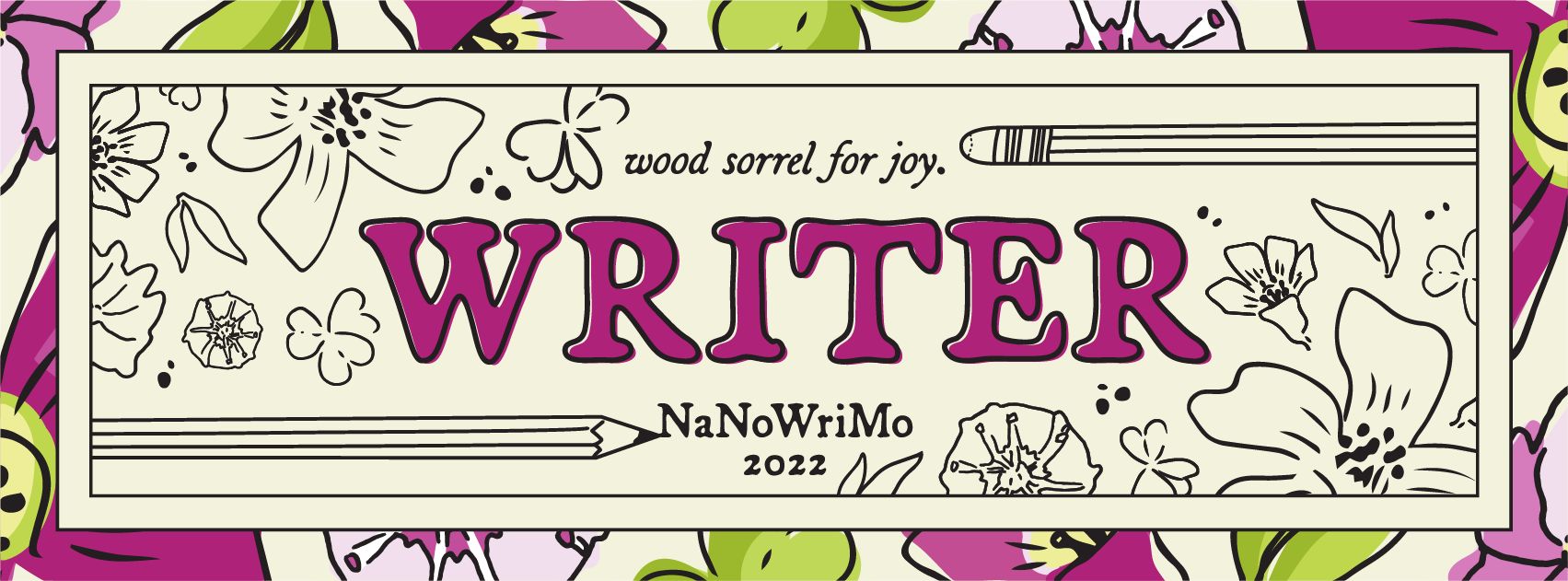
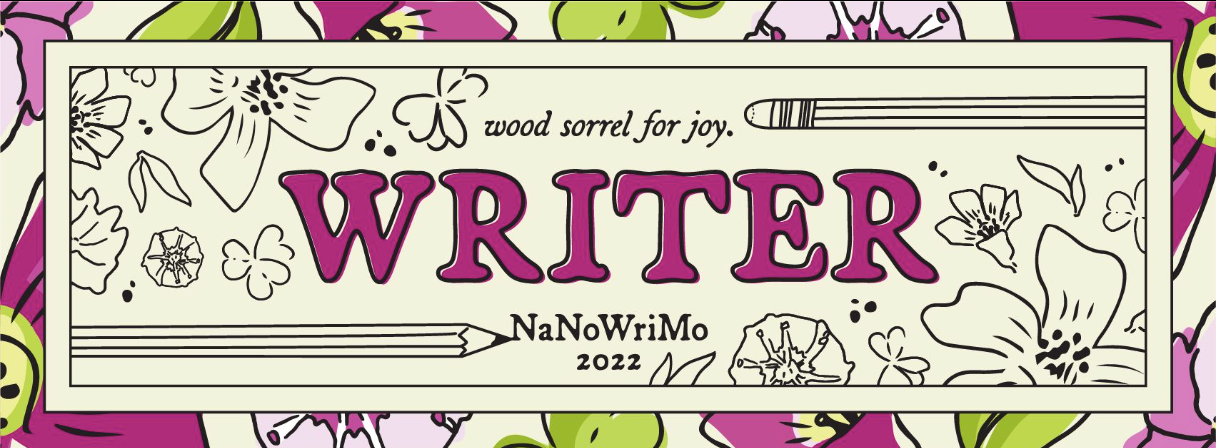






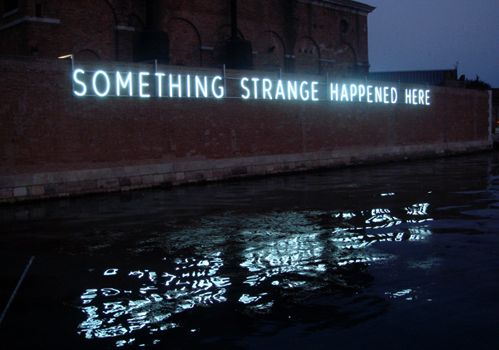
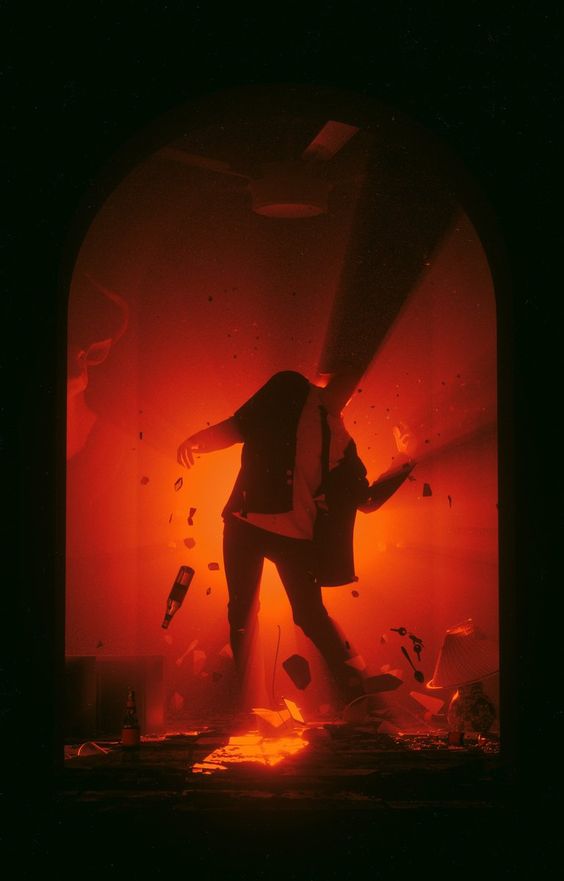



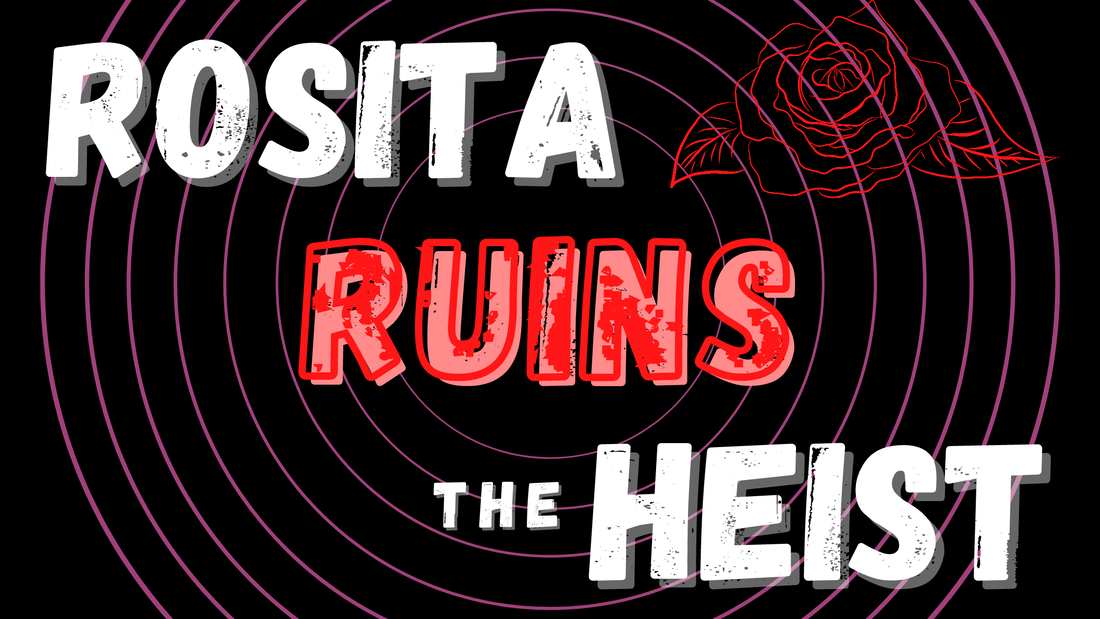
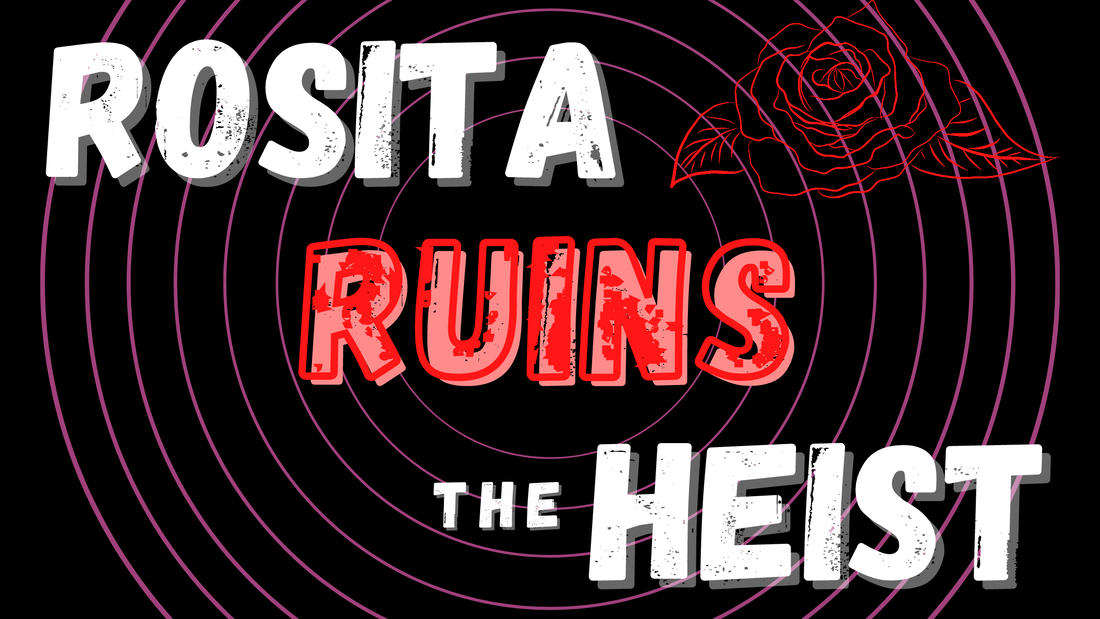
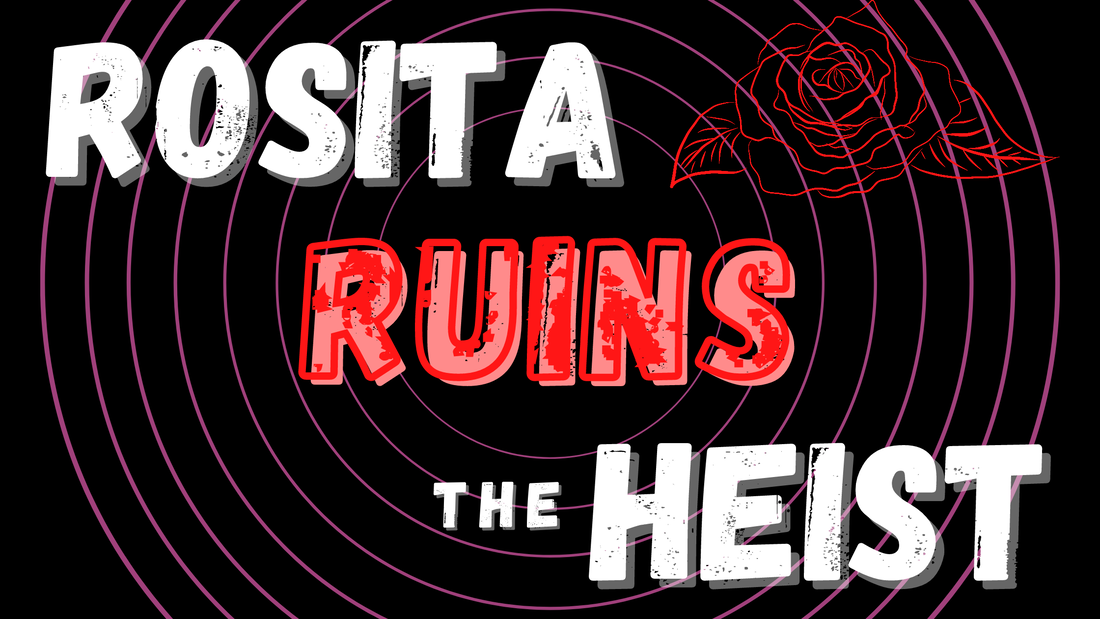
 RSS Feed
RSS Feed
